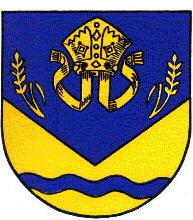Attenhausen: Difference between revisions
Jump to navigation
Jump to search
Knorrepoes (talk | contribs) m (Text replace - "'''Origin/meaning :'''<br/>" to "====Origin/meaning====") |
Knorrepoes (talk | contribs) m (Text replace - "|width="15%"|50 px|right |}" to "|width="15%"|50 px|right |}<seo title="Wappen, Gemeindewappen" />") |
||
| Line 3: | Line 3: | ||
|width="70%" align="center" |'''Heraldry of the World<br/>Civic heraldry of [[Germany]] - [[Deutsche Wappen|Deutsche Wappen (Gemeindewappen/Kreiswappen)]]''' | |width="70%" align="center" |'''Heraldry of the World<br/>Civic heraldry of [[Germany]] - [[Deutsche Wappen|Deutsche Wappen (Gemeindewappen/Kreiswappen)]]''' | ||
|width="15%"|[[File:Germany.jpg|50 px|right]] | |width="15%"|[[File:Germany.jpg|50 px|right]] | ||
|} | |}<seo title="Wappen, Gemeindewappen" /> | ||
Revision as of 16:41, 5 November 2012
| Heraldry of the World Civic heraldry of Germany - Deutsche Wappen (Gemeindewappen/Kreiswappen) |
ATTENHAUSEN
State : Rheinland-Pfalz
District (Kreis) : Rhein-Lahn Kreis (until 1969 Unterlahnkreis)
Verbandsgemeinde : Nassau
Origin/meaning
The arms were officially granted on ??
The mitre in the arms is a symbol for the monastry of Arnstein and der Lahn, to which the village historically belonged.
The lower half shows the Lahn river. The wheat-ears are a symbol for agriculture.
The colours are taken from the arms of the counts of Nassau, who ruled the area.
Literature : Image from http://rz-home.de/~vgnassau/gemeinden.htm, background by James d'Argantel Odrowaz, London.

